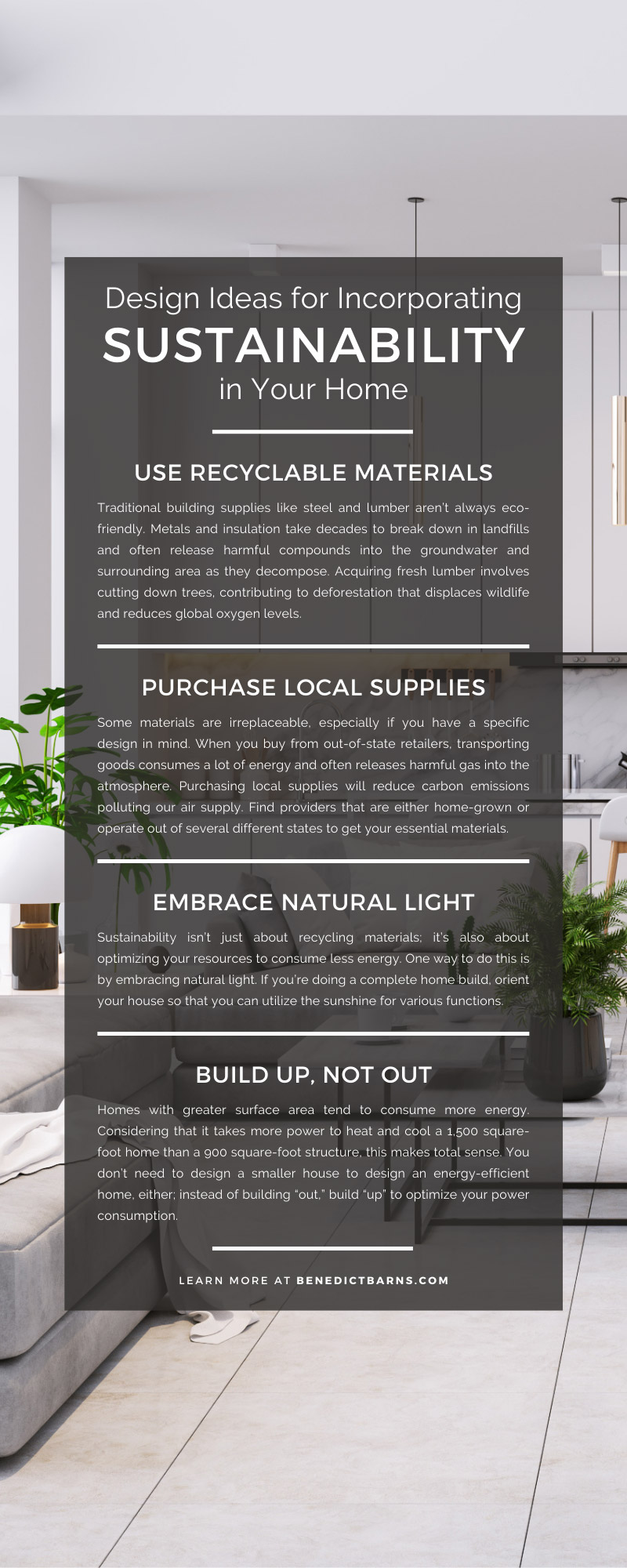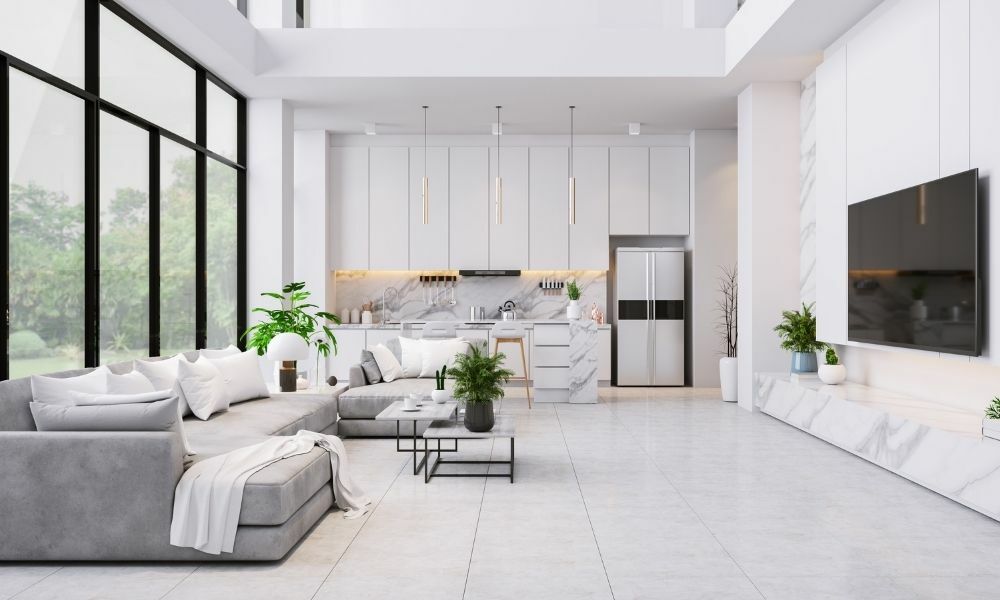Pursuing an eco-friendly build involves more than meets the eye. The good news is that there are so many ways to keep the environment in mind while building your dream living space. Consider these design ideas for incorporating sustainability in your home for your next home improvement project.
Why Is Sustainability Important?
To begin, it’s important to define sustainability so that you can clearly see where the idea is most applicable in your own renovations. Sustainability is a concept that tries to help meet society’s current needs without damaging the chances of future generations to meet their own. Following this idea is crucial if we want to set our children and grandchildren up for success.So, what does sustainability have to do with construction? Home renovations often generate a ton of waste that can harm workers, residents, and the surrounding ecosystems. In addition, many materials aren’t eco-friendly and can cause significant damage to the environment. These actions degrade the Earth and leave it worse for the next generation.
How To Make Your Home Sustainable
If you’re worried about how your new home additions are going to affect the environment, don’t panic! There are so many ways to do a home build that reduces damage while allowing you the renovations you desire. Choosing a responsible contractor, like Benedict Antique Lumber, is the first step. Check out these other design ideas for incorporating sustainability in your home if you want to commit to the movement.Use Recyclable Materials
Traditional building supplies like steel and lumber aren’t always eco-friendly. Metals and insulation take decades to break down in landfills and often release harmful compounds into the groundwater and surrounding area as they decompose. Acquiring fresh lumber involves cutting down trees, contributing to deforestation that displaces wildlife and reduces global oxygen levels.However, using recyclable materials poses way less of a threat than your average construction supplies. Reclaimed wood comes from existing structures, so you don’t have to cut down a tree to build your home. You can also repurpose things such as glass for countertops, tiles for floors, and bricks for exterior projects to reduce the number of new products used for your project.
Purchase Local Supplies
Some materials are irreplaceable, especially if you have a specific design in mind. When you buy from out-of-state retailers, transporting goods consumes a lot of energy and often releases harmful gas into the atmosphere. Purchasing local supplies will reduce carbon emissions polluting our air supply. Find providers that are either home-grown or operate out of several different states to get your essential materials.Make sure to use a supplier that ethically acquires their resources. Some contractors only use repurposed wood and can create incredible home additions like accent walls and cabinets without increasing their carbon footprint. Others only pull supplies from specific sites, so they don’t harm already damaged areas. Being selective about where you get your building materials can make a massive difference when it comes to sustainable home construction.
Embrace Natural Light
Sustainability isn’t just about recycling materials; it’s also about optimizing your resources to consume less energy. One way to do this is by embracing natural light. If you’re doing a complete home build, orient your house so that you can utilize the sunshine for various functions.Opting for solar power reduces the need for nonrenewable energy sources, like gas. You can also use sunlight to heat your home naturally instead of running your HVAC system. Optimize your home design with proper window placement to maximize this renewable resource in your space.
Build Up, Not Out
Homes with greater surface area tend to consume more energy. Considering that it takes more power to heat and cool a 1,500 square-foot home than a 900 square-foot structure, this makes total sense. You don’t need to design a smaller house to design an energy-efficient home, either; instead of building “out,” build “up” to optimize your power consumption.Many modern home designs rely on this “up, not out” idea to fit spacious houses in tight areas. Instead of creating a wide, one-story home, consider working with your contractor to design a taller house with multiple levels. This way, you can reduce the amount of energy you need while having a trendy living space!
Upgrade What You Have
Instead of pursuing a brand-new build or a complete remodel, consider upgrading what you already have. Sustainable renovation projects find ways to repurpose their surroundings, so update something old in your home instead of creating something new. Working with existing structures allows you to use fewer resources and consume less power, all of which help protect the environment.If you desire a beautiful, rustic interior, install antique hand-hewn beams to cultivate that rugged aesthetic. Create an accent wall in your living room with reclaimed lumber instead of demolishing your current home structures. There are so many ways to refresh your space without embarking on a major build that can have a negative impact on the environment. Get creative and collaborate with your contractor to design the best home additions for your space.
How Is Antique Lumber Sustainable?
We’ve done a lot of talking about deforestation and the devastating environmental effects of harvesting lumber. You might be wondering how antique wood is sustainable. Reclaimed wood comes from existing buildings such as barns and old factories. These lumber sources don’t require striking down trees and are a more ethical choice of building material.In addition, most antique lumber sources are old, so their wood doesn’t contain harmful VOC’s and other toxic compounds that could harm humans, wildlife, and ecosystems. This lumber typically comes from old trees that had time to mature before construction, leading to stronger structures with more longevity than fresh or artificial wood.
As you can see, designing an eco-friendly home is easy with a little bit of creativity. If you’re serious about incorporating eco-friendly materials into your next home improvement project, check out Benedict Antique Lumber. We specialize in supplying high-quality antique wood for your unique renovations. Contact us today and let us help you create a space as eye-catching as it is sustainable!


